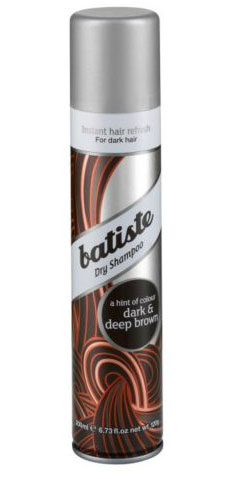
Dry shampoo is a suspension of rice starch in a butane/propane
propellant. The propellant evaporates as it escapes from the can,
leaving the dry product on your hair. The rice starch absorbs oils in
your hair and is then brushed out. You can see how this can is made in
the section on making cans.

This cleaner spray uses pressurised carbon dioxide gas as a propellant because flammable gases like propane are not allowed when working on jet engines full of fuel.